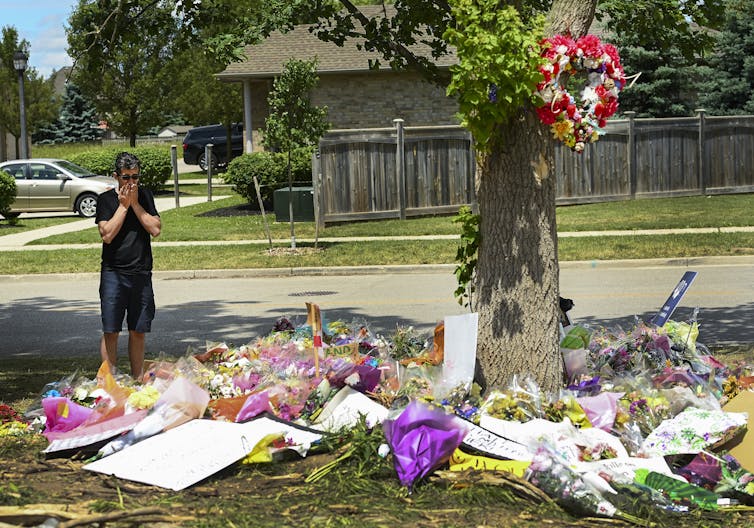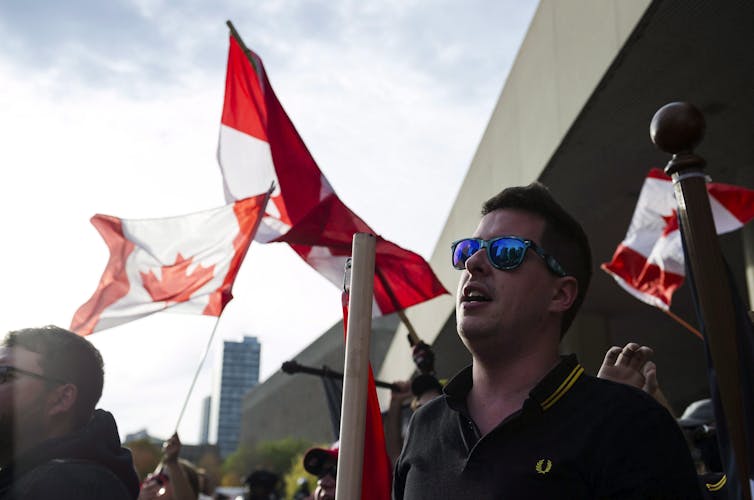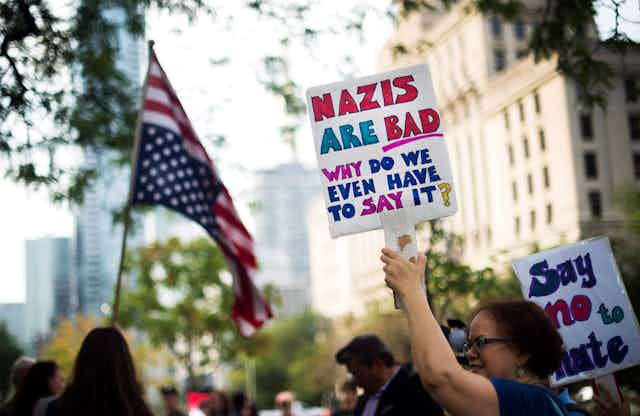The Canadian government has expanded the definition of terrorism to include violence motivated by white supremacy and the hatred of women.
These ideologies were grouped as “right-wing extremism” and defined as a terrorism threat in Canada. The move gained support after several high-profile incidents of white supremacist and misogynistic violence, such as the 2020 stabbings in a Toronto erotic massage parlour by a teenage male.
Since then, the Canadian government has continued to focus on right-wing ideologies. In 2021, Parliament passed a motion asking the government to name the Proud Boys a terrorist organization. It also asked the government to “use all available tools to address the proliferation of white supremacists and hate groups.”
Shortly after, Public Safety Canada named several more right-wing groups as terrorist entities. This was six months after Canada became the first country to use terrorism charges in response to violence motivated by misogyny.
Praise — and unexpected criticism
Some critics have praised these steps by the government. One reason is the longstanding criticism that Canada does not take the threat of right-wing violence seriously enough.
After 9/11, the Canadian government directed domestic security infrastructure toward so-called homegrown terrorism. Experts implicitly and explicitly framed it as a new threat linked to Muslim communities. The definition did not include violence motivated by beliefs like Christianity, white supremacy or the hatred of women.
Over time, a “pervasive system of surveillance” developed in Canada that targeted Muslim communities. Critics have pointed out its harmful effects, such as pathologizing dissent and criminalizing aspects of Muslim identity.
In this context, some critics have hoped the addition of certain right-wing groups to the official list of terrorist entities is a step in shifting the focus away from Muslim and racialized communities.
What about the government’s racism?
However, there are now critics arguing alongside some vulnerable communities — including racialized and Muslim communities — who are against using an anti-terrorism response to right-wing violence. These critics say the government itself is racist and sexist, and this is not addressed by anti-terrorism laws.

It may seem counter-intuitive. Why would marginalized people oppose actions that seem intended to protect vulnerable communities? Several reasons can be gleaned from the scholarly literature:
- Expanding the definition of terrorism to include violence motivated by right-wing ideologies might hide more common and everyday forms of racist and sexist violence. For example, feminists worry that police resources could be focused on large-scale attacks and those that meet the high legal standard for a terrorism conviction. Investigating the more common crimes against women, like domestic violence, could be pushed aside.
Read more: Why domestic violence victims often feel retraumatized by police
It has also been pointed out that Canada already has legal tools to combat terrorism of any ideological orientation. The government’s failure to use them against right-wing violence is more a lack of will than a lack of means. Adding to an already lopsided national security budget doesn’t change this.
Finally, anti-terrorism laws cannot address the racist and sexist violence within the legal system. Much of the violence that marginalized people face comes from interactions with the legal system itself. As activist Hashra Walia puts it, the state is “invested in the very same violence we want to end.” As a result, there is concern that any expansion of police and security powers will only end up perpetuating a system that already targets vulnerable communities.
Together these arguments claim that law and violence can’t be separated. The forms of oppression that exist in society are within the legal system itself.
The law’s relation to violence
One way to think about the debate is to see the legal category of terrorism as dividing violence more than stopping it. If the state is itself sexist and racist, it remains so even if it defines white supremacist and misogynistic violence as terrorism. The key is to understand that the goal is not to stamp out white supremacy and misogyny, but to manage it.
Read more: Why charging incels with terrorism may make matters worse
In defining right-wing violence as terrorism, the government divides violence into sanctioned and unsanctioned forms. It means the law can be seen to let some racist and sexist forms of violence go by referring to its own categories.

A prime example is structural violence, like unequal treatment by the courts or targeting by the police. The government’s legal prohibition on terrorism does not exclude such structural violence.
The Canadian government is defining a broader range of ideologically motivated violence as terrorism. But is it a good idea to expand the system of surveillance that already targets minority communities to protect them from far-right violence? As some members of Muslim and racialized communities, as well as feminists, point out, these actions don’t necessarily eradicate violence — and they could make structural and institutional violence seem more palatable.
We suggest that the extension of the terrorism category divides and regulates violence embedded in Canadian society more than eliminates it. Critical security scholars have questioned the relationship between definitions of terrorism and the use of state power.
In this spirit, Canada’s moves to define violence motivated by white supremacy and misogyny as terrorism ought to make us question how the state manages these problems, and its own legitimacy, at a time when the country’s colonial and white supremacist legacy is increasingly being acknowledged.

